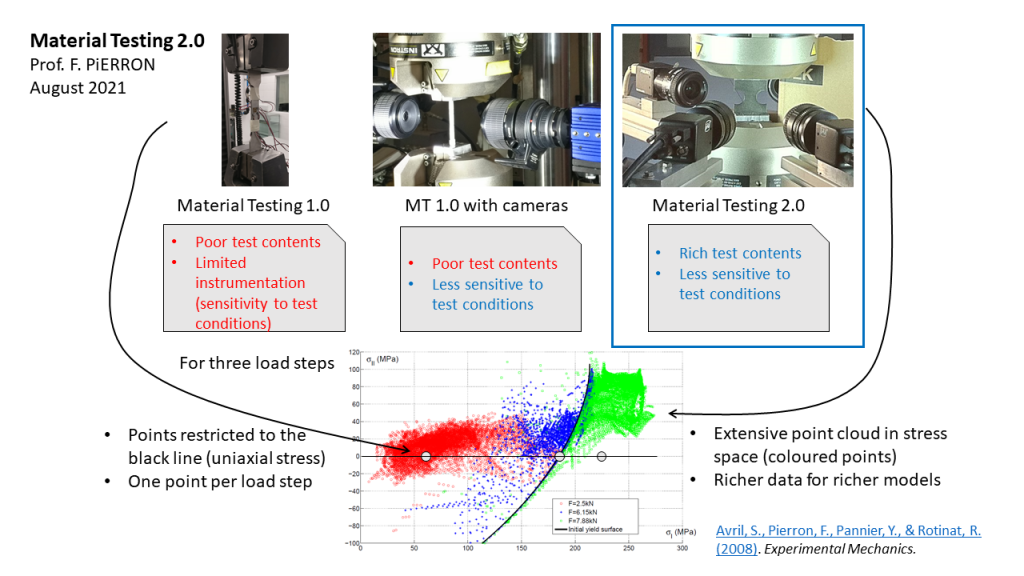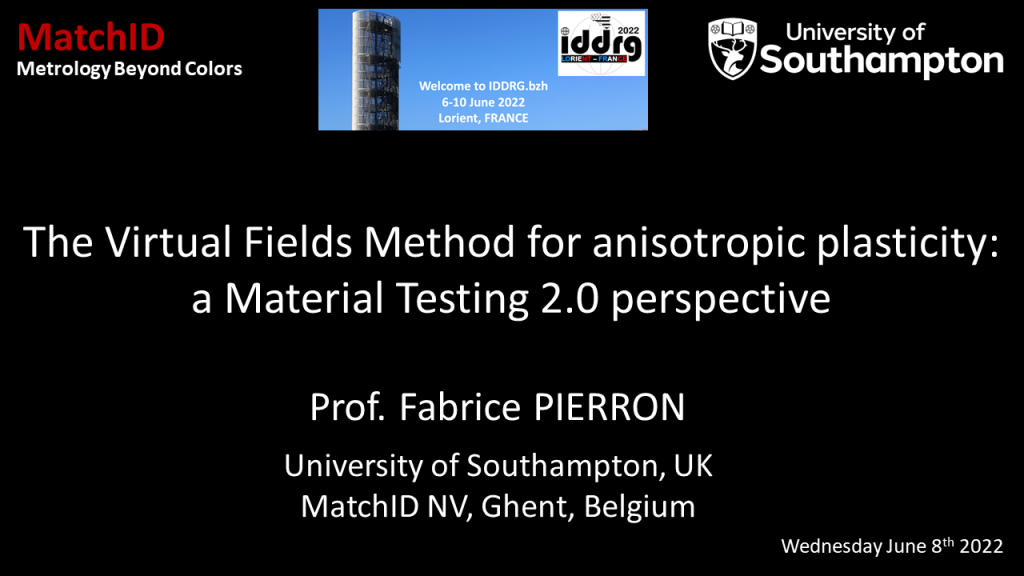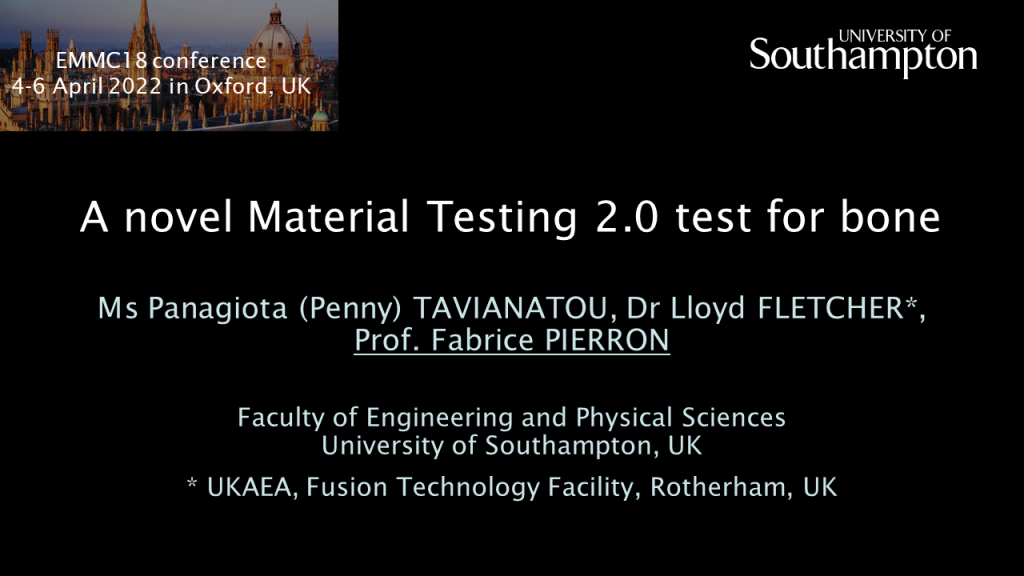Digital imaging through CCD/CMOS cameras has been one of the major technological breakthroughs of the 21st century. Such cameras are now everywhere around us: smartphones, CCTVs, sports broadcasting, wildlife observation etc. Their costs have kept decreasing and performance, drastically increasing. Such cameras have also started a revolution in mechanical testing of materials and structures. Through digital image processing algorithms like ‘Digital Image Correlation’ (DIC), it is now possible to track the 3D displacement of a random grey-level pattern attached to a deforming surface, with an accuracy down to 1/100th of a pixel. Initiated in the early 1980’s, DIC is now largely emerged, with commercial software available since the early 2000’s. However, intimate integration of this technology into material testing has not happened yet, through a combination of lack of understanding and confidence in the technology and a general lack of training, certification and standards. The paradigm change brought by the shift from a few tens of data points to hundreds of thousands and more as provided by DIC needs to be accompanied by a thorough redesign of the testing methodologies to deliver the full potential of this technology.
Coupon-based material testing has not changed much since the development of the electrical strain gauge after WWII. Current ISO or ASTM standards mostly rely on simple test configurations (uniaxial tension or 3-pt bending for instance) to extract material parameters like elastic modulus or yield stress. The underpinning concept is to use statically determinate stress solutions so that point strain measurements are enough to identify constitutive parameters. This is in stark contrast with numerical simulation, which has seen spectacular progress in the last decades. There is a growing gap between the two, which has consequences in terms of cost and efficiency. It is therefore essential to develop the next generation of data-rich image-based tests, coined ‘Material Testing 2.0’ (MT2.0)* here. Figure 1 illustrates this new paradigm. While a uniaxial tensile test provides one data point per load step, MT2.0 tests provide the equivalent of one MT1.0 test for each measurement point, resulting in an immensely richer database from which models can be better and more efficiently calibrated.
The two main tools used in MT2.0 are full-field deformation measurements such as Digital Image Correlation (DIC) or the Grid Method (GM), and inverse identification tools like the Virtual Fields Method (VFM) or Finite Element Model Updating (FEMU). Both sets of tools are now mature enough so that the development of MT2.0 becomes timely. MT2.0 will simplify the test pyramid by reducing the number of tests, improve the formulation and identification of material models and facilitate the emergence of innovative tailored heterogeneous materials like fibre placement manufactured composites or 3D printed materials which spatially-variable properties cannot reliably be obtained by current standard tests.
* F. Pierron, M. Grédiac, Towards Material Testing 2.0. A review of test design for identification of constitutive parameters from full-field measurements, Strain 57(1) (2021) e12370.

MT2.0 for anisotropic plasticity, presented at the IDDRG conference in Lorient, France, June 8th 2022

Presentation at the EMMC18 conference, April 5th 2022 in Oxford, UK
